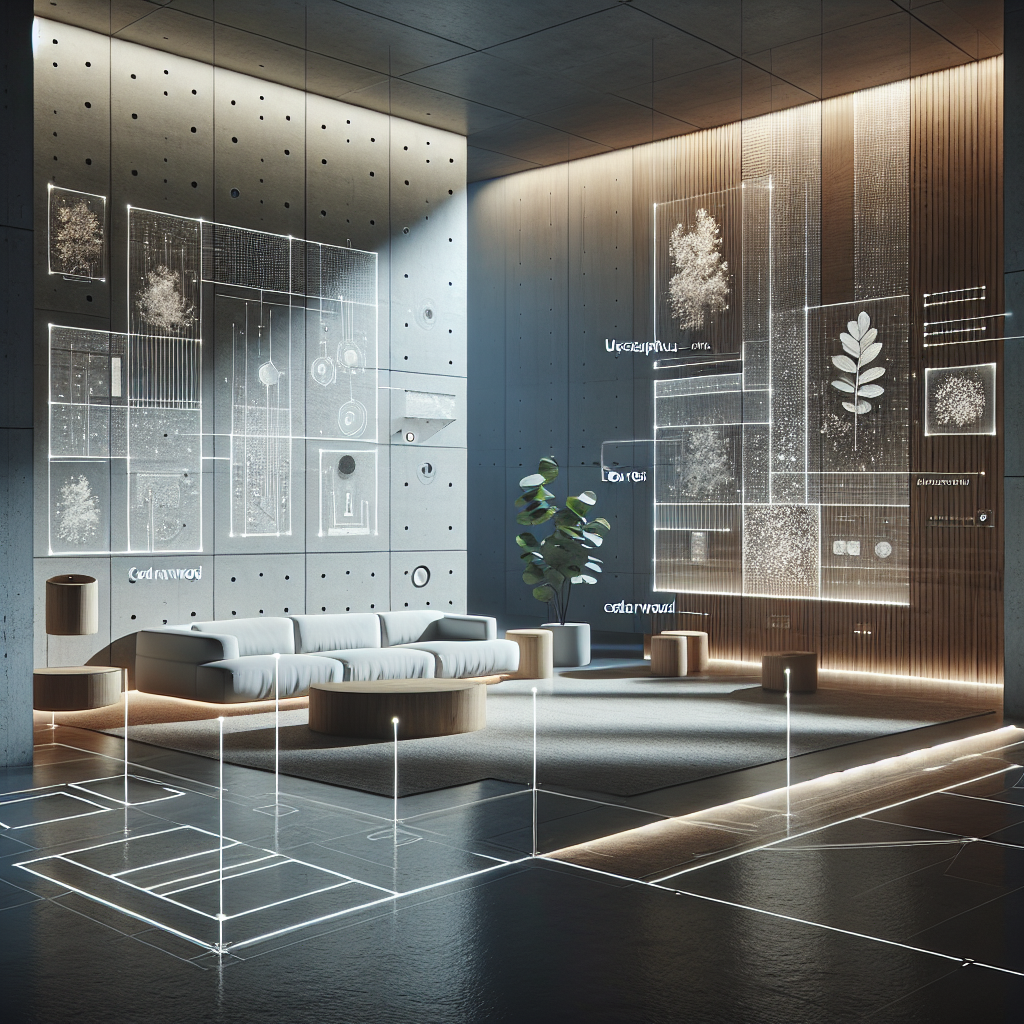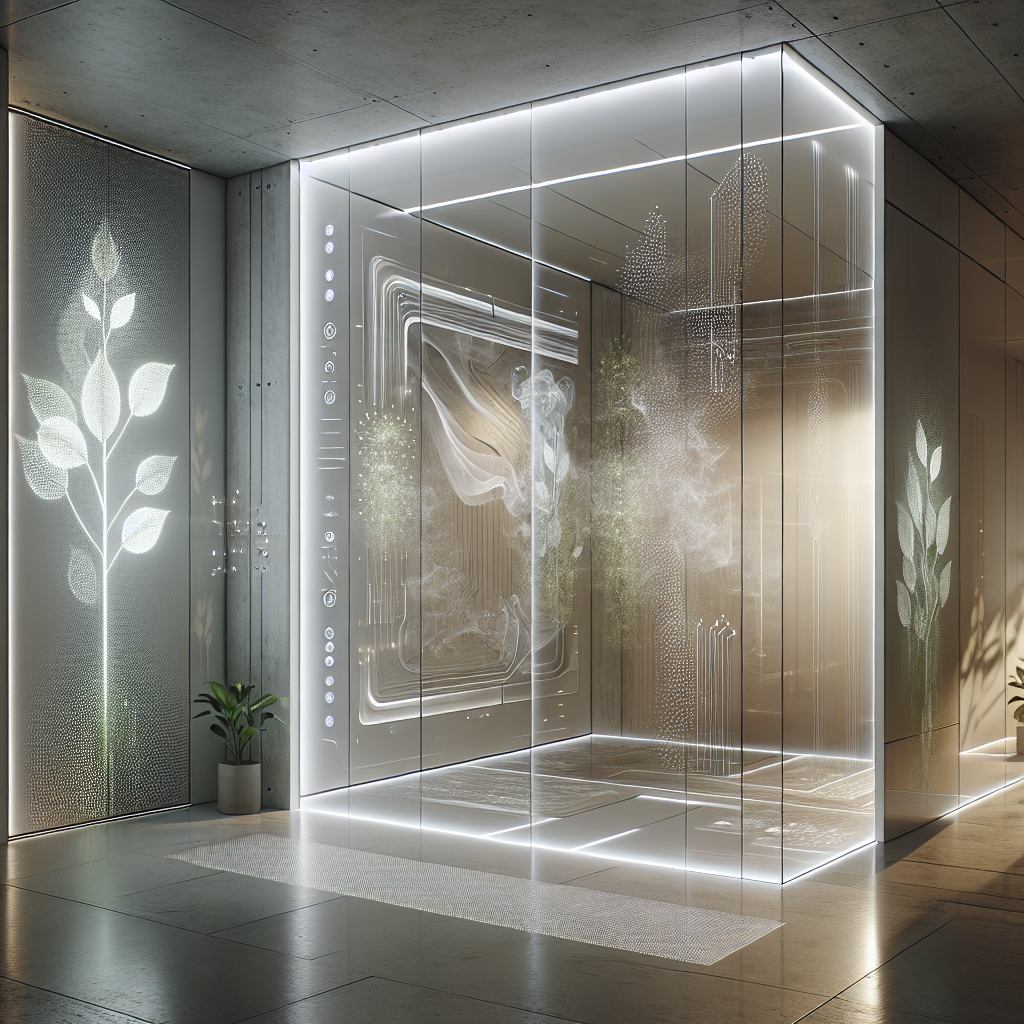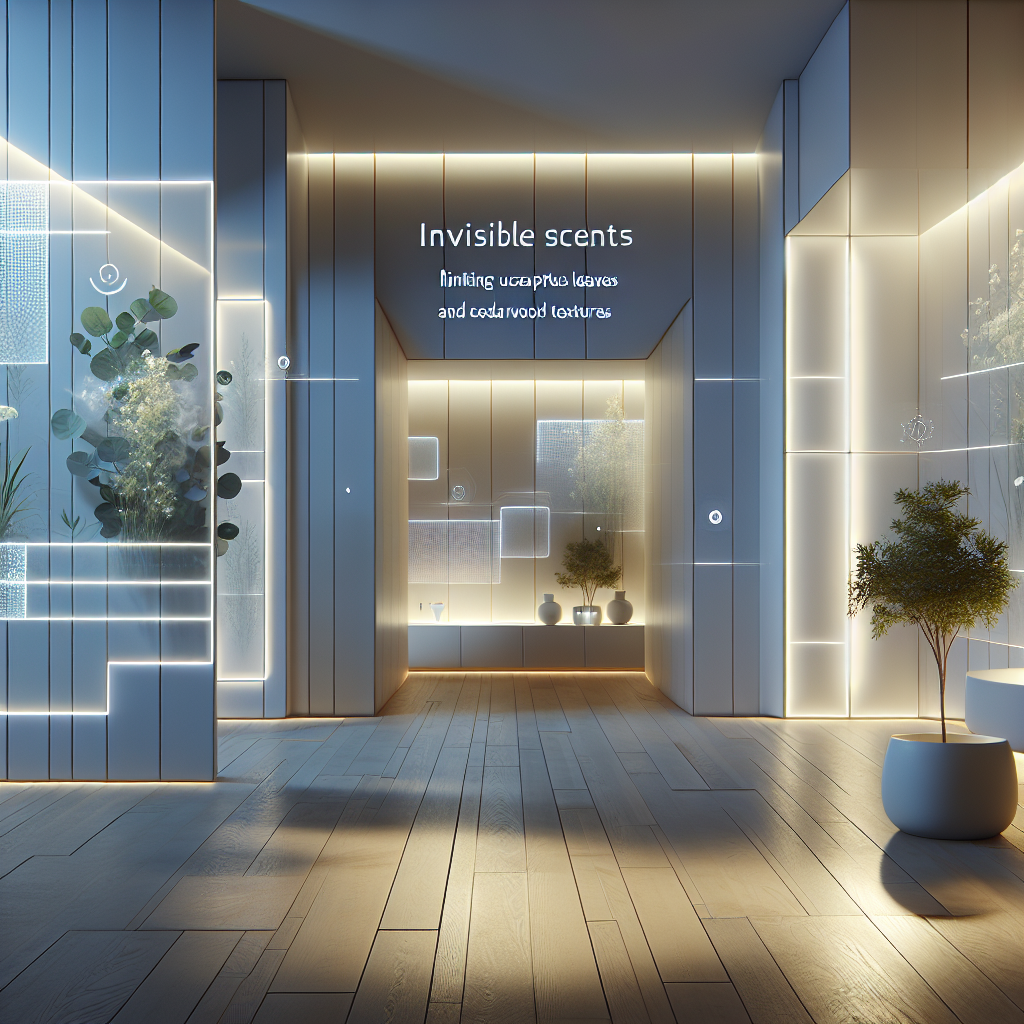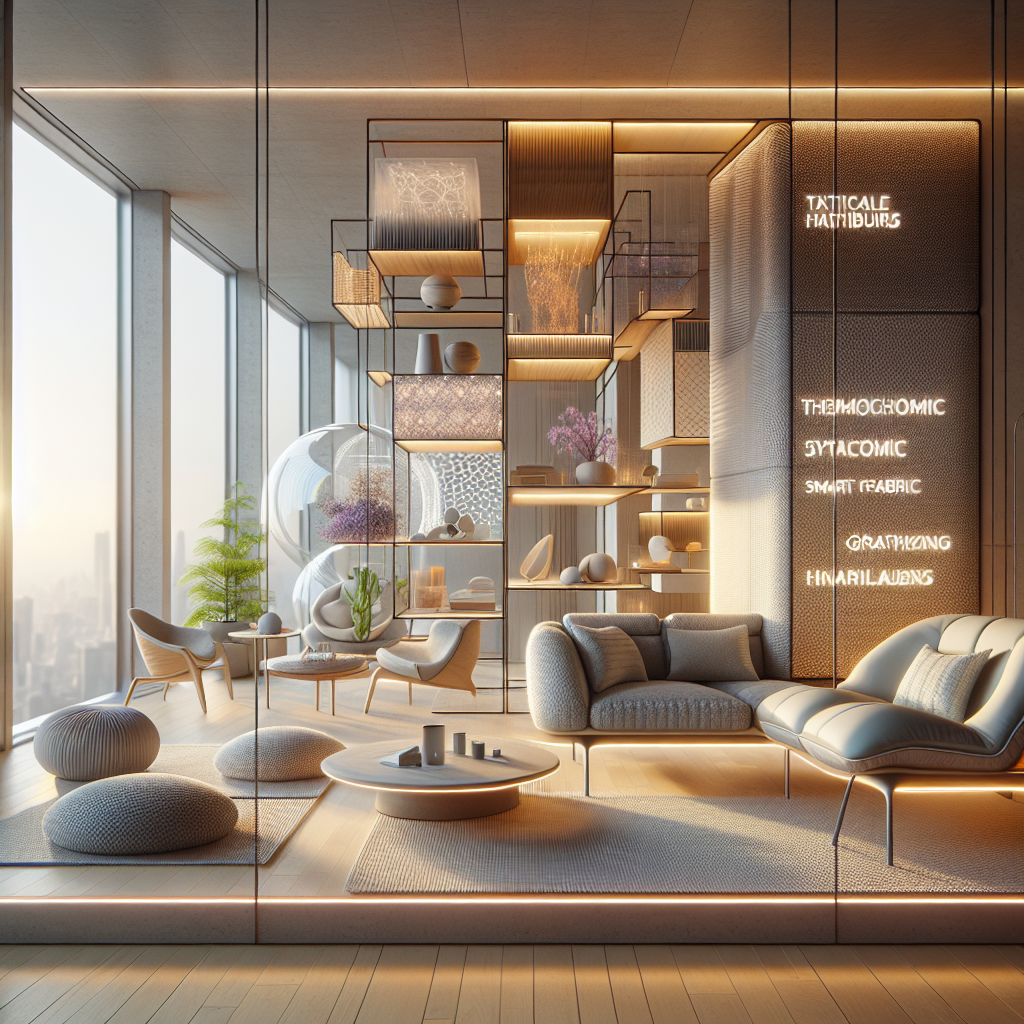Interactive odor architecture: digital panels releasing curated scents
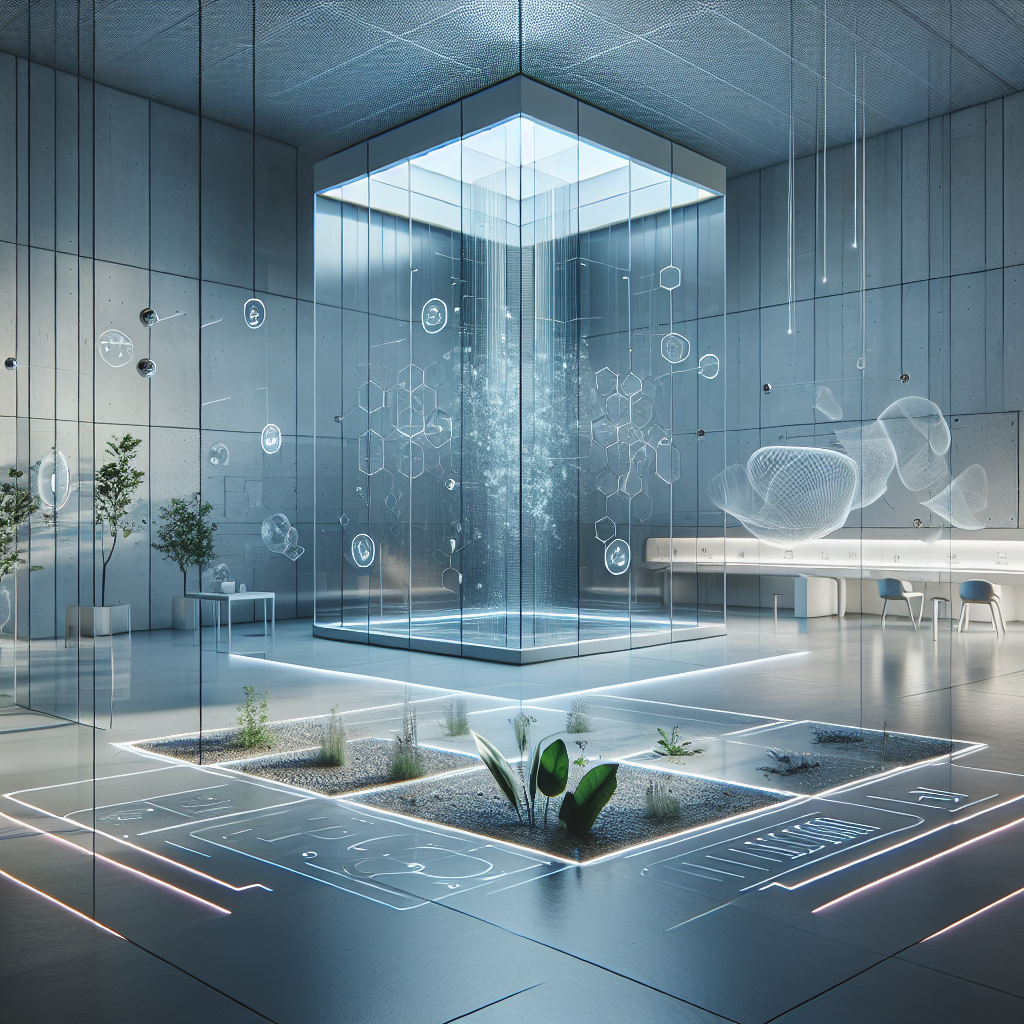
Interactive Odor Architecture: Digital Panels Releasing Curated Scents
In an era where design transcends visual aesthetics, architects and interior designers are embracing multisensory experiences to redefine spatial perception. At the forefront of this sensory revolution is the emerging trend of interactive odor architecture, where digital panels seamlessly integrate curated scents into built environments. This innovative approach to spatial design not only enriches user experience but also opens new avenues for emotional engagement, well-being, and environmental storytelling.
The Rise of Multisensory Design
Historically, architecture has predominantly been a visual discipline, emphasizing form, color, and spatial arrangement. Yet, contemporary designers recognize that our experience of space is inherently multisensory. Incorporating smell into architectural spaces is not entirely new—ancient temples and palaces utilized incense and fragrant woods to evoke spiritual or regal atmospheres. However, the advent of digital technology has elevated scent integration to unprecedented levels of precision and interactivity.
Recent studies underscore the profound impact scent has on human emotions, memory, and behavior. According to research published in the Journal of Environmental Psychology, specific fragrances can significantly influence mood, productivity, and overall satisfaction within a space. Leveraging these insights, architects are now crafting spaces that actively respond to occupants’ sensory needs, creating dynamic environments that adapt and evolve through scent.
Digital Panels: A New Frontier in Olfactory Design
Central to this sensory revolution are innovative digital scent panels. These sleek, unobtrusive devices integrate seamlessly into walls, ceilings, or furniture, releasing carefully curated fragrances at precise intervals or in response to user interactions. Equipped with advanced sensors and connected to smart building systems, these panels offer architects and designers unprecedented control over olfactory experiences.
Imagine entering a minimalist lobby where subtle notes of cedarwood and bergamot greet visitors, instantly conveying warmth and sophistication. Or consider a high-end retail boutique that shifts fragrances throughout the day, transitioning from energizing citrus in the morning to calming lavender in the evening, enhancing customer comfort and engagement. Such dynamic scent experiences are now possible, thanks to digital panels that can be programmed remotely, adjusted in real-time, and tailored to specific architectural narratives.
Case Study: Sensory Innovation at Milan’s Alcova 2025
A prime example of interactive odor architecture was showcased at the renowned Alcova exhibition during Milan Design Week 2025. Here, visionary design studio Scentient Spaces unveiled an immersive installation featuring digital scent panels integrated within translucent partitions. As visitors navigated the labyrinthine structure, sensors detected their presence, triggering the release of curated fragrances designed to evoke specific emotional responses—curiosity, tranquility, or nostalgia.
The installation’s centerpiece was a translucent corridor infused with the scent of petrichor—the earthy aroma following rain—evoking memories of nature and serenity. Adjacent spaces emitted complementary fragrances, from fresh eucalyptus to comforting sandalwood, creating a multisensory journey that captivated attendees and sparked widespread industry discussion about the future of scent in architecture.
Enhancing Well-being Through Olfactory Experiences
Beyond aesthetic considerations, interactive odor architecture holds significant potential for enhancing human health and well-being. As explored in our previous analysis of biophilic design, incorporating natural elements into built environments profoundly benefits occupants’ mental and physical health. Similarly, carefully selected scents can reduce stress, improve cognitive function, and promote relaxation.
In healthcare settings, digital scent panels can diffuse calming aromas like lavender or chamomile, reducing patient anxiety and improving recovery outcomes. Workplaces can employ invigorating scents such as peppermint or lemon to boost productivity and alertness. Residential environments might adapt fragrances throughout the day, aligning with circadian rhythms to enhance sleep quality and overall comfort.
Sustainability and Ethical Considerations
As with any innovative technology, sustainability and ethical considerations are paramount. The fragrance industry has historically faced criticism for synthetic chemicals and environmental impacts. However, contemporary scent technology prioritizes sustainability, utilizing natural, responsibly sourced ingredients and biodegradable delivery systems. Moreover, digital scent panels can precisely control fragrance dispersion, minimizing waste and ensuring optimal indoor air quality.
Architects and designers committed to sustainability are increasingly integrating these panels into eco-conscious projects, complementing other green strategies such as green roofs and energy-efficient building systems. This holistic approach ensures that multisensory design enhances environmental responsibility rather than detracting from it.
Future Perspectives: The Evolution of Interactive Odor Architecture
Looking ahead, the potential applications of interactive odor architecture are vast and varied. As smart home technology continues to evolve—explored in our article on smart home automation—digital scent panels will likely become integral components of personalized living environments. Artificial intelligence and machine learning algorithms could analyze occupant preferences and behaviors, automatically adjusting fragrances to optimize comfort and well-being.
In urban planning, scent technology could transform public spaces, parks, and transportation hubs, enhancing user experience and promoting emotional connections to the built environment. Imagine city squares subtly infused with fragrances that evoke local flora or cultural heritage, enriching residents’ daily experiences and fostering community identity.
Moreover, as virtual and augmented reality technologies advance, scent integration could bridge digital and physical realms, creating fully immersive multisensory experiences. Virtual tours of historical sites, museums, or even future Mars habitats could incorporate realistic olfactory elements, deepening user engagement and authenticity.
Conclusion: A New Dimension in Architectural Expression
Interactive odor architecture represents a profound shift in how we perceive and experience built environments. By embracing scent as a powerful design tool, architects and designers can craft spaces that resonate emotionally, enhance well-being, and foster deeper connections between people and places. As digital scent panels become increasingly sophisticated and widespread, they promise to redefine architectural practice, ushering in a new era of multisensory innovation.
In this exciting frontier, architecture transcends mere visual aesthetics, becoming a holistic, immersive experience that engages all senses. The future of design is not only seen—it is felt, heard, and now, profoundly, smelled.
